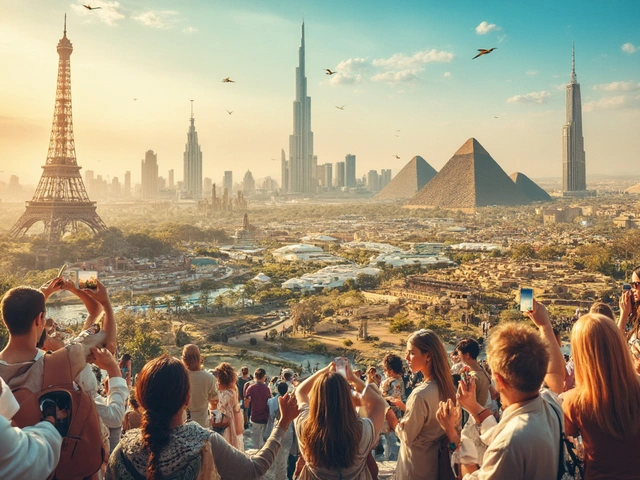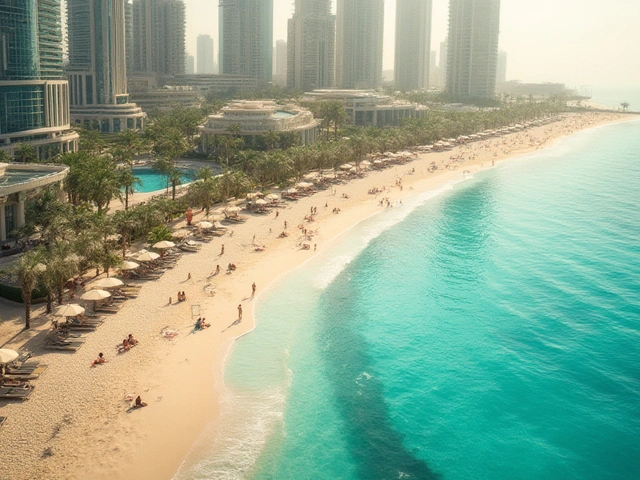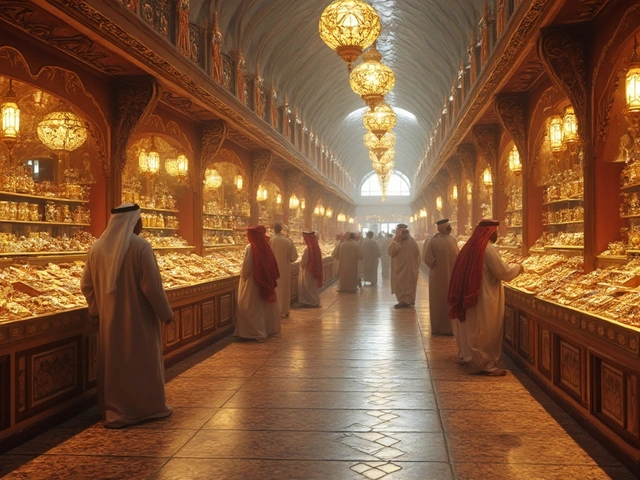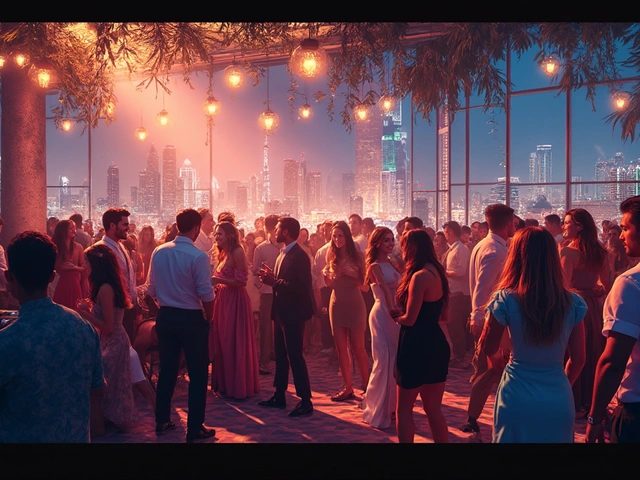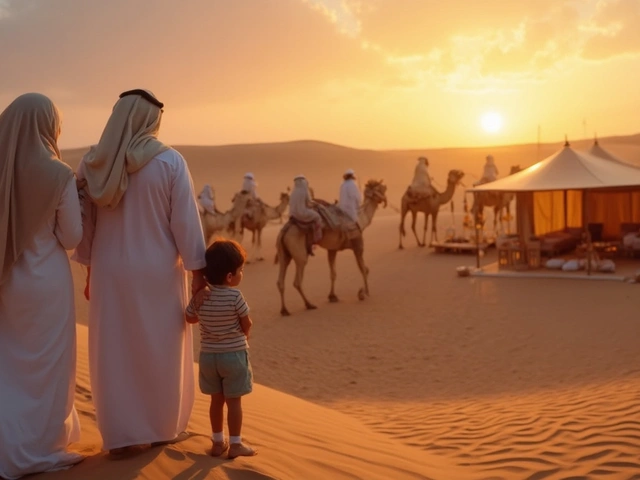Some buildings are familiar wherever you are in the world. The Burj Al Arab is one of those rare icons, standing like a sculpted sail off the coast of Dubai. But let’s get honest—this isn’t just a hotel. It’s a symbol. A status marker for Dubai, for what money, ambition, and artistry can do when nobody dares to think small. Picture this: a 321-meter tower that doesn’t settle for blending in; it struts. If you’re scrolling through photos of Dubai, odds are, the Burj Al Arab's futuristic shape pops out of the blue Gulf every time, and it doesn’t take a background in architecture to get why.
Burj Al Arab: Pushing the Limits of Design, Engineering, and Imagination
So, what’s the big deal with the Burj Al Arab’s design? It’s not just its sheer height, though that’s nothing to sneeze at—before the Burj Khalifa, this was Dubai’s tallest building. The real magic is its shape: a curving, billowing sail echoing Dubai’s seafaring roots. The British architect Tom Wright of Atkins drew inspiration directly from the sails of traditional Arabian dhows, which is about as Dubai as it gets. The challenge? Engineers had to build it on an artificial island, jutting out 280 meters from the shore. We’re talking about creating a solid foundation on sand—imagine trying to build a sandcastle that never falls over, only with wild winds, salty air, and the sea constantly trying to reclaim the land.
To pull this off, they drove 250 concrete piles 45 meters down into the sand. Then, they propped up a concrete platform supported by a giant, honeycomb-shaped cross-bracing structure, giving the building its legendary stability—no matter how wild the waves get, this baby stands tall. The icon’s skeleton is pure engineering brilliance, but it’s the outside that everyone remembers. The two enormous wings forming the sail aren’t just pretty. They form a massive “V,” enclosing the world’s tallest hotel atrium, soaring 180 meters from floor to roof. Inside, gold leaf—yes, real gold leaf—blankets the columns, banisters, and even the elevator doors. Walking in, you almost expect to bump into a sultan or an A-list celebrity. The color theme is wild: deep reds, blues, warm yellows, all designed by Khuan Chew and the team at KCA International, and each shade pays homage to Arabian seas, sun, and sand. Even the carpets are custom-woven to fit the sweeping curves of the halls.
But the Burj Al Arab doesn’t just stop at looking dramatic for Instagram. Its features are laced with record-breakers. The helipad, for example, stuck out 212 meters above the sea, is famous for wild publicity stunts—remember when Tiger Woods hit a golf ball into the Gulf from up there, or when Andre Agassi and Roger Federer played tennis on it? Meanwhile, the Royal Suite has gold, marble staircases, and a rotating bed. There are 202 duplex suites; every guest gets a personal butler, and the counter-culture continues even beneath the waves at Al Mahara—an underwater-themed restaurant set inside a floor-to-ceiling aquarium. If you peek at the facts, it takes over 1,000 workers from 30 countries to keep Burj Al Arab running daily. Now, that’s unmatched elegance served 24/7.
| Feature | Detail |
|---|---|
| Height | 321 meters (1,053 ft) |
| Year Opened | 1999 |
| Architect | Tom Wright (Atkins) |
| Hotel Suites | 202 duplex suites |
| World Records | Tallest all-suite hotel (1999), iconic helipad events |
There’s a reason National Geographic called it a "theater of opulence." The whole structure—even the staff uniforms—was created to dazzle, not just serve. Wright once said:
"If you can draw a building and a child recognizes it, that’s iconic. Burj Al Arab set out to do just that for Dubai."
Now, that’s an audacious stamp on the skyline. If you’re all about Instagram-worthy moments or just want to see the world’s definition of luxury in real life, this is one for the bucket list. Pro tip: If you dine at one of the restaurants, you’ll have access to the hotel interior—even if you’re not booked in a suite.
Inside the Legend: The Artistry and Experience of the Burj Al Arab
Step through the doors, and you know right away: this is no ordinary hotel lobby. The scent? Think fresh-cut flowers and warm amber, mixed with a hint of the ocean. The lobby soars, sunlight pouring through giant glass walls, bouncing off fountains and gold-leaf domes. If you ever get a chance to watch Zeus—my massive, boisterous golden retriever—try to race through our house, you’ll get the idea: there’s space to breathe here, and the energy is electric. You might spot guests in traditional Emirati robes, or influencers snapping shots against a backdrop of swirling water features and bold mosaics. And this place doesn’t just look pricey; it feels priceless.
The centerpiece of it all? The gigantic atrium and its endless rainbow of colors. It’s hypnotic—stand at the base, look up, and you’ll see what I mean. But the magic is in the details. Each suite is two stories, with a spiral staircase inside. Think about that next time you check into a regular hotel room. Every piece of furniture is custom-made; there are Hermès toiletries in each bathroom, and huge floor-to-ceiling windows frame the Gulf. The Royal Suite’s canopy bed is surrounded by mirrors, just so you remember where you are. And yes, you get 24-karat gold iPads—sometimes luxury really does go digital.
But it’s not just about what’s in your room. The Burj Al Arab’s restaurants are famous for multi-sensory dining. Al Muntaha sits 200 meters above the gulf, giving you panoramic views as you munch on Michelin-starred plates. If you want a different type of drama, Al Mahara feels like you’re dining inside a shimmering fishbowl, surrounded by exotic sea life. These aren’t just places to eat—they’re part of the show. Even the hotel’s Scape Restaurant, perched on the terrace, makes you feel like you’re dining at the edge of the world. For guests, the experience begins before you even arrive. Rolls-Royce transfers from the airport? Of course. Private check-in on every floor? Absolutely. A personalized pillow menu and bath menu, so even your nap is on point? That’s standard fare here.
The Burj Al Arab pays obsessive attention to hospitality details. Staff outnumber guests by six to one—that’s service levels you’d struggle to find anywhere. What’s wild is how much space you get: each suite is at least 170 square meters—about double that of even some high-end city apartments. This is luxury redesigned for Dubai’s standards: not just comfort, but spectacle. The spa, Talise, sits high above the gulf, with an infinity pool that looks like it’s melting into the horizon. Even if you don’t splurge on a suite (and let’s be real, it’ll cost you), you can still book in for high tea at Skyview Bar or a dinner with views so breathtaking you might forget what’s on your plate.
Here’s what nobody tells you: the Burj Al Arab isn’t just for the ultra-rich. There are ways to sneak a peek at the legend. Book breakfast, afternoon tea, or dinner—there are plenty of ‘entry-level’ ways to sample the experience, so nobody has to just admire from afar. Planning a celebration? Staff can organize proposals, private fireworks, and even helicopter arrivals.
- Best time to visit: Sunset for jaw-dropping sea views.
- Dress code: Smart casual (yes, you’ll want to look the part!).
- Photo tip: Head for the bridge at dusk for classic city-meets-icon shots.
While you’re around, try the Burj Al Arab design tour.’ You’ll get behind-the-scenes stories up close, from the original blueprints to the crazy engineering fixes needed for such a wild structure.
Tapping Into the Future: What the Burj Al Arab Means for Dubai and You
Living in Dubai means you get used to the extraordinary. But even locals still get wowed when driving past the Burj Al Arab at night—illuminated in shifting colors, making the coastline look almost otherworldly. The hotel shifted the way Dubai thinks about urban design. It set a benchmark. Everything from the Palm Jumeirah to the Museum of the Future comes from that spirit of "why not?" that the Burj embodies. Its existence pushed the city’s luxury tourism scene into the global stratosphere. Want stats? Tourism numbers skyrocketed after the Burj opened in 1999. Suddenly, travelers everywhere wanted a slice of that seven-star magic.
This place became a backdrop for global sports, music videos, and haute-couture campaigns. It even made a cameo in Mission: Impossible. You can’t really talk about Dubai’s reinvention without giving credit to the Burj for showing what’s possible when imagination is married to engineering (and a serious budget). Today, it regularly ranks in the top five luxury hotels worldwide, usually clinching awards for ‘World’s Most Luxurious Hotel.’ Pretty much every major architect in the region references it as something inspired their own boldness. And it still draws architecture students from around the world, sketchbooks in hand.
Travelers today are all about unique experiences, and the Burj Al Arab delivers that in spades. Want a memory you’ll never forget? Book a night (save up, if you have to). But even if you’re just an admirer, it invites you to dream a little bigger. Honestly, seeing the Burj Al Arab up close gives you a buzz similar to what I imagine Zeus feels when I get out his leash for a beach walk: pure, fizzing excitement.
| Burj Al Arab | Other Luxury Dubai Hotels |
|---|---|
| Iconic Sail-shaped Design | Contemporary or traditional |
| Private Artificial Island | City or beach locations |
| All-Suite Only | Mixed rooms/suites |
| Personal butler service standard | Available only in some suites |
| Helipad and sky-high dining | No comparable features |
If you’re planning a trip, check if any exclusive events or art installations are going on—the Burj often runs special evenings for visitors, perfect for soaking up the Dubai vibe. And if you’re chasing that perfect city shot, swing by at golden hour when the sail glows against the sky.
Have questions? You’re not the only one. Here are a few quick answers:
- Can you go inside Burj Al Arab if you’re not staying there? Yes—book a meal, a spa treatment, or a guided tour to gain entry. Security is tight, so don’t just show up expecting a look around.
- What’s the dress code? Think smart casual to smart chic—no shorts or beachwear inside the hotel.
- Is it pet-friendly? Unfortunately, Zeus and his four-legged pals wouldn’t be allowed in. Leave your pets at home for this one.
- How much does a night cost? Booking a suite can range from $1,000 to over $20,000 per night, depending on the room and season.
- What’s a must-see inside? The atrium (absolutely jaw-dropping) and the Skyview Bar for the view.
Next time you’re in Dubai, don’t settle for admiring it from a postcard. See the Burj Al Arab in the flesh—it might just change the way you see what’s possible with design, ambition, and a whole lot of style.

